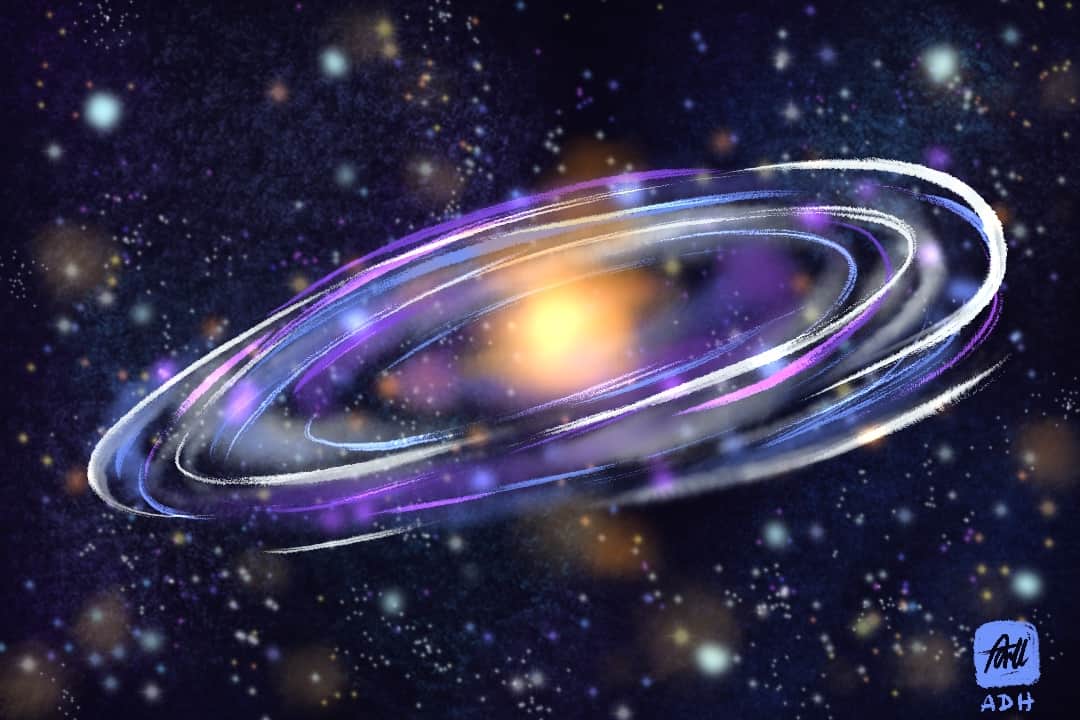A galaxy is a huge collection of stars, dust, and gas held together by gravity and moving through space together. Our solar system, like many others, orbits around the center of a galaxy — in our case, the Milky Way.
So, how did this happen? Why do solar systems exist in these structures rather than in isolation? In other words, what forms galaxies?
Theories of galaxy formation
Astrophysicists are still researching galaxy formation to this day. Some theories posit that following the Big Bang — the theory that the universe started and expanded from a single intensely dense point — gravity pulled matter to create dense clumps that grouped together. The clumps that did not dissipate because other opposing forces grew larger, attracting more matter around them.
Eventually, high amounts of the clumped matter collapsed under their own gravity. These clumps formed within the first few hundred thousand years of the universe’s existence, developing into the first proto-galaxies that we see today.
A 1962 paper by astrophysicists O. J. Eggen, D. Lynden-Bell, and A. R. Sandage suggested that the mass of proto-galaxies was comparable to the mass of today’s galaxies. At this size, the clumps of matter collapse under their own gravity and become proto-galaxies, which later develop into mature galaxies. This is known as the top-down or Monolithic Collapse model.
However, in 1984, physicists J. R. Primack, G. Blumenthal, and S. M. Fabera proposed the Lambda Cold Dark Matter model, which builds on a bottom-up model that opposes the top-down model. It instead states that proto-galaxies grew into mature galaxies through galactic mergers or the collision of two or more galaxies. The Lambda Cold Dark Matter model adds cold — or slow-moving — dark matter to the equation of galaxy formation. Dark matter is an invisible form of matter that does not interact with light. It does, however, have gravitational effects on galaxies and galaxy clusters. It is through its gravitational influence, then, that astrophysicists measure dark matter and why they think dark matter exists.
The Lambda Cold Dark Matter model explains the initial clumping of matter after the Big Bang, arguing that the pronounced variations in dark matter density throughout the universe initially clumped together and collapsed under their own gravity, attracting visible matter to form visible proto-galaxies. The model then continues with the bottom-up model of proto-galaxy maturation through galactic mergers.
Physicists prefer this model, and it is more supported by observational data, such as evidence of mergers that astronomers can observe by viewing distant galaxies in the process of merging, dwarf galaxies near larger galaxies that are at the beginning of merging, or even faint tails of gas associated with galaxies that are left-over indications of past mergers.
But if dark matter is invisible, how can physicists even study it to develop a model that includes it in galaxy formation?
Dark matter
Dark matter accounts for around 85 per cent of the total matter in the universe or over five times more than visible matter.
Each galaxy has its own ‘halo’ of dark matter around it that has more mass than all the other matter in that galaxy put together. This dark matter halo influences the movement of that galaxy. Furthermore, the gravitational interactions of the halos of different galaxies contribute to driving the growth and structure of galaxies.
The existence of this halo of dark matter can be seen through an effect called gravitational lensing. Massive objects bend space-time, the fabric of the universe, and that warp also causes light to bend around sources of high mass. This causes distortion and magnification of light from objects behind and in the same line of sight as the mass, causing space-time bending.
Galaxies bend space-time and cause the distortion and magnification of light from other galaxies further back. Physicists use this level of distortion to calculate the amount of mass in a galaxy or a cluster of galaxies, as well as its location. Astrophysicists concluded that dark matter must exist to account for the mass required to cause these distortions.
The Chandra X-Ray Observatory obtained evidence for dark matter by studying a particular cluster of galaxies called the Bullet cluster.
A previous high-energy collision between two large galaxies formed the Bullet cluster around 3.8 billion light years away from Earth. Because dark matter does not directly interact with itself or with other matter like gas, it was not impacted in the collision, whereas other visible matter like gas was. This caused a separation between dark matter and visible matter in the cluster. Optical imaging of the cluster shows this separation of mass and how nearly all the matter in the cluster is dark matter. This separation of matter allows us to avoid conflating dark matter and visible matter – it allows us to understand that dark matter is a separate type of matter from visible matter.
So, galaxies and how they behave and form largely depend on dark matter interactions, and there is still a lot more to learn about them. Astrophysicists worldwide are still intensely researching questions like what dark matter is made of, what causes supermassive black holes in the middle of galaxies, and many more. In fact, the Dunlap Institute for Astronomy and Astrophysics at U of T is one of the research facilities studying these topics and the many questions they raise.



No comments to display.